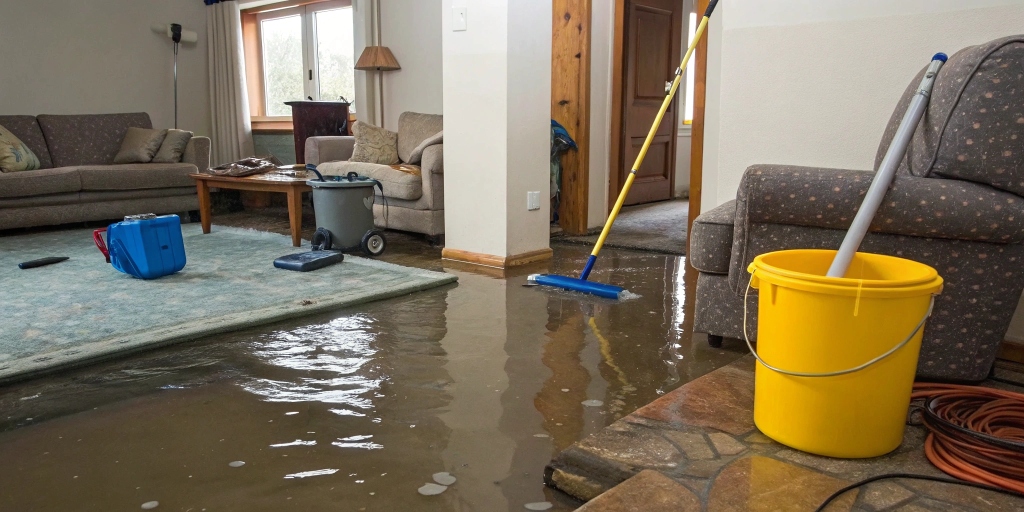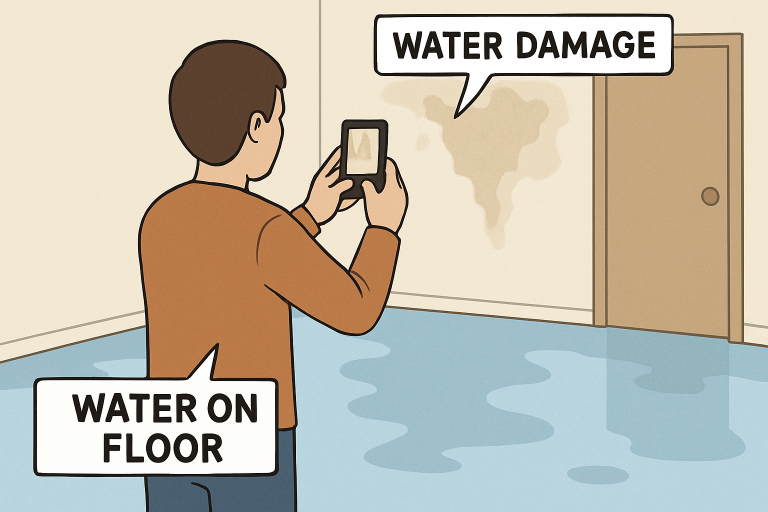
How to Respond Quickly to Water Damage at Home
Key Takeaways
- Always prioritize safety: Cut off power and stop the water source first.
- Thorough documentation is essential for insurance and repairs.
- Prompt drying and cleaning are vital to prevent mold and lasting damage.
- Professional services may be necessary for extensive or contaminated damage.
- Preventive maintenance and regular inspections can reduce the risk of future water incidents.
Introduction
Water damage is one of the most stressful situations homeowners can face, creating chaos by ruining property and posing health risks. Swift action is crucial to minimize damage, prevent costly repairs, and keep your family safe. Learning to act decisively can make all the difference if you’re confronted with a water emergency. With a solid approach and an understanding of water damage restoration, you can facilitate a faster recovery and help protect your most significant investment—your home. By prioritizing safety and organization, you’ll be able to manage the aftermath and prevent further headaches down the line.
Tackling water damage involves a handful of vital steps. From switching off the power supply to calling insurance, and drying every affected nook and cranny, each move you make in the initial hours is pivotal. Professional help is often necessary, especially if the water has seeped into walls or flooring. The sooner you know what to do and whom to call, the more manageable the process becomes. Not sure where to start? This guide walks you through immediate actions and tips from industry professionals.
Ensure Safety First
Before any cleanup or restoration begins, safeguarding your household is the top priority. Water and electricity are dangerous, and water from unknown sources can carry serious health risks. First, turn off the primary electric circuit if there’s any risk of water coming into contact with wiring or outlets. If accessible and safe, immediately turn off the main water valve to stop the flooding at its source.
In addition to electrical and water hazards, avoid exposure to standing water—especially if it appears cloudy, dirty, or emits foul odors. Contaminated water can contain bacteria, sewage, or chemicals. In these circumstances, wait for professionals to assess the situation or don protective gear if you need to enter the area.
Document the Damage
Accurate documentation is essential for insurance purposes and repair estimates. Before you begin cleanup, take comprehensive photographs and videos of every impacted area, from waterlogged floors to wet walls and ruined furniture. Capture images from multiple angles. Keep a detailed written inventory, including serial numbers, model names, dates of purchase, and estimated values for all affected items. This step streamlines the insurance process and establishes proof of loss.

Contact Your Insurance Company
Reach out to your insurer as soon as possible—most policies require prompt notification after an incident. Provide precise information about the cause and extent of the water damage, and share your photographic evidence and inventory. Review your homeowner’s policy to understand which aspects of water damage are covered, as some sources (like flooding or gradual leaks) might require additional policies or special riders. For tips on maximizing your claim and understanding insurance fine print, you can refer to guidance from sources like Consumer Reports.
Begin Water Removal and Drying
Every minute counts in the battle against water damage. If the flooding is mild, quickly remove excess water using pumps, wet vacuums, or buckets. Prioritize high-traffic areas and spaces prone to mold, such as basements and under sinks. Open all windows if the weather allows and use large fans and dehumidifiers to increase airflow and speed up evaporation. Mold can begin to develop in as little as 24–48 hours, making prompt action essential. Check under carpets and behind baseboards for hidden moisture, as these areas are often overlooked and susceptible to lingering dampness.
Clean and Disinfect
Once the area is dry, thorough cleaning helps prevent secondary damage from mold and bacteria. Scrub all hard surfaces with disinfectant products approved by the Environmental Protection Agency (EPA), and clean furniture, fixtures, and HVAC systems thoroughly. Porous materials like carpeting, insulation, and drywall may need to be discarded if they’re saturated, since they are breeding grounds for mold and can rarely be salvaged. For more information on health and safety after water emergencies, consult the Centers for Disease Control and Prevention resources.
Prevent Future Water Damage
Prevention starts with regular home maintenance and targeted upgrades. Inspect hoses, pipes, and appliances frequently for wear or leaks—fixing minor issues early can avert major disasters later. Clean gutters and downspouts every season to facilitate proper drainage and ensure foundation grading directs water away from the structure. Consider upgrading your home with preventative solutions like sump pumps in the basement, water leak detectors, or backflow valves for extra peace of mind.
Seek Professional Assistance
Significant or contaminated water damage requires professional intervention. Water damage restoration specialists have the equipment and expertise to thoroughly dry, sanitize, and repair your home, preventing overlooked pockets of moisture that could cause structural or health issues down the road. If you’re unsure about the extent of the damage or want to guarantee a safe remediation, reaching out to certified professionals can help ensure a thorough, swift recovery. For standards on professional restoration, consider checking out the EPA’s guidelines on mold remediation.
Water damage can be overwhelming, but responding quickly and following proven steps can minimize the long-term impact and safeguard your family’s health. Prioritize safety, document everything, act quickly to dry out your home, and bring in experts for complete peace of mind.



Average Rating